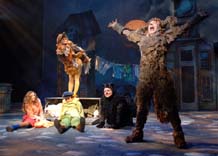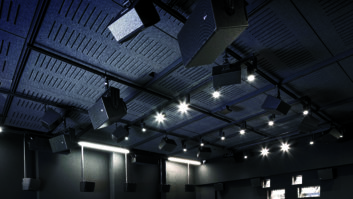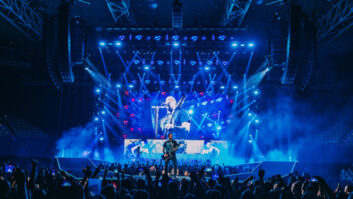
The North American tour of the Czechoslovakian opera Brundibar is traveling with a sound system comprising Meyer Sound’s self-powered loudspeakers and an LCS Audio Matrix3 audio show control system, which provides mixing, processing and routing for all of the microphones and source material.
Directed by Tony Taccone, the production debuted at Berkeley Repertory’s Roda Theatre in Berkeley, Calif. The show then embarked on a tour to venues including Yale Repertory in New Haven, Conn. and the New Victory Theatre in New York City. Sound design was handled by the team of Rob Milburn and Michael Bodeen.
The opera’s production elements include a 13-piece orchestra and 30-voice children’s choir. In addition to 18 orchestra mics, RF mics were used on the opera’s 10 principal actors and 20 of the 30-strong children’s chorus. “I decided on an A/B vocal system, which would allow me to assign each child in the chorus to one of two matrixes,” Bodeen says. “This made a complicated setup, but it helped reduce or eliminate the comb-filtering effect.”
The A and B matrixes were set up on the 40-input/32-output Matrix3 system, which was fed by the outputs of two Yamaha DM2000 mixing consoles. One console was dedicated to the wireless mics while the other primarily handled the orchestra and sound effects.
A total of 16 Meyer Sound CQ-1 wide coverage main loudspeakers were flown for the mains, with the A and B systems each using two cabinets on the left, two on the right and four in the center cluster. Twelve MM-4 miniature wide-range loudspeakers were used for frontfill, with six cabinets (three for the A system and three for the B system) located on either side of stage center. Additional fill was provided by eight UPM-1P ultra-compact wide-coverage loudspeakers: two cabinets for each system to provide under-balcony coverage, and another two for each system for rear-of-house coverage in the orchestra and balcony seating.
The stage area was covered with monitoring and localized sound effects provided by two UM-100P wide coverage stage monitors, four UPA-1P compact wide-coverage loudspeakers facing down from above, six UPM-1P cabinets and four USW-1P compact subwoofers.
Meyer Sound’s MAPP Online Pro acoustical prediction program was used to determine the hanging height, pitch and attitude of each loudspeaker.
For more information, visit www.meyersound.com.






